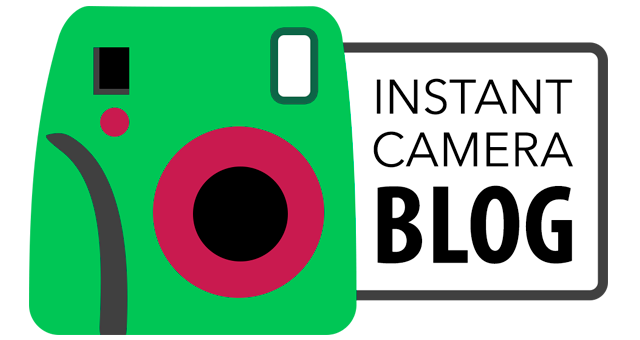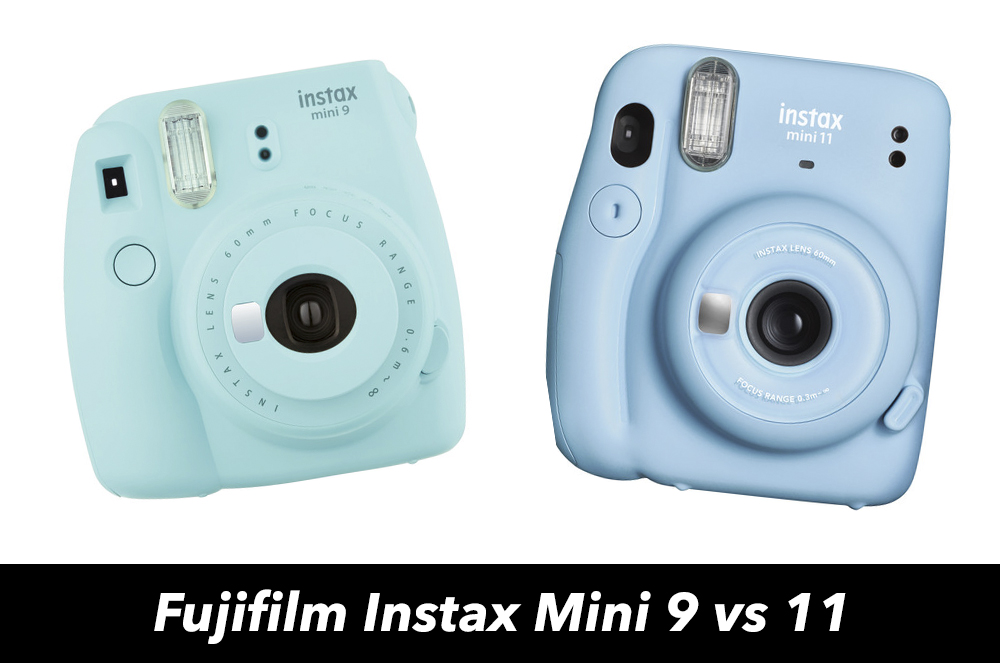
Nearly three years have passed since Fujifilm announced the Instax Mini 9 camera. Yesterday we met its successor, the Instax Mini 11, which looks a lot like its predecessor on the outside but introduces a couple of important upgrades to the exposure settings and lens. Let’s discover all the main differences between these two instant cameras now!
What the Mini 9 and Mini 11 have in common:
- Instax Mini film
- 60mm lens (1:12.7)
- real image finder with 0.37x magnification
- constant firing flash
- two AA batteries
1. Automatic Exposure
Unlike the Instax Mini 9 which had a dial with five different presets (Very Sunny, Sunny, Cloudy, Indoors and Hi Key) to change the exposure, the Mini 11 relies on an Automatic Exposure mode that adjusts the shutter speed and flash output automatically. The shutter speed ranges from 1/2s to 1/250s, and the exposure from Lv 5.0 to 14.5 depending on how much light is in the scene.
No doubt Fujifilm chose this new system because with the Mini 9, it was easy to forget to turn the dial to the appropriate preset if you were in a rush to take a picture. And as we all know, each wasted photo is approximately $1 out of your wallet!
2. Selfie Mode
If you wanted to take a close-up or selfie with the Mini 9, your only option was to attach the optional selfie lens that came in the box. Doing so would reduce the camera’s minimum focus distance from 60cm to anywhere between 35cm and 50cm. There were a few caveats however: it was quite fiddly to attach and remove, and also very easy to forget at home!
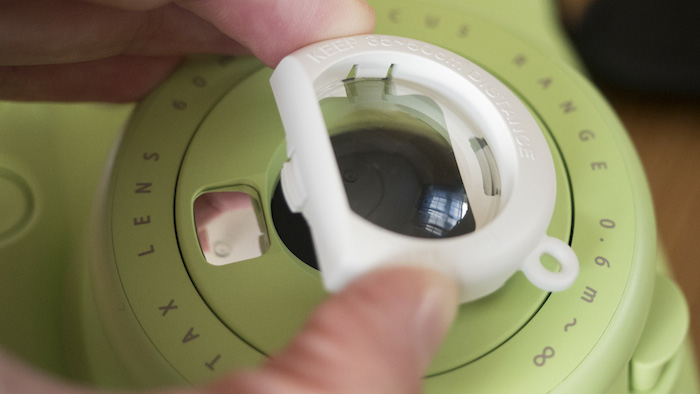
Now, the Mini 11 has an integrated selfie mode. All you have to do is pull out the front of the lens to set it to a distance of 30cm to 50cm. Just remember to pop it back in once you’re done!
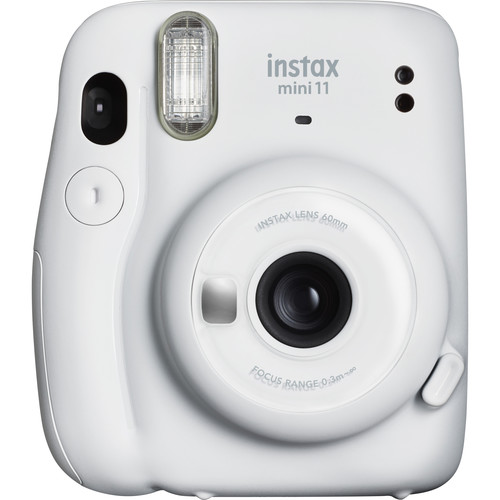
3. New Accessories
In addition to the strap that already came with the Mini 9, Mini 11 comes with two shutter button accessories: one that looks like a jewel and a second one that glows in the dark. The colour of both accessories matches the colour of the camera.
4. New Colours
The Mini 11 comes in a different set of colours to the Mini 9: Sky Blue, Blush Pink, Charcoal Gray, Ice White and Lilac Purple.
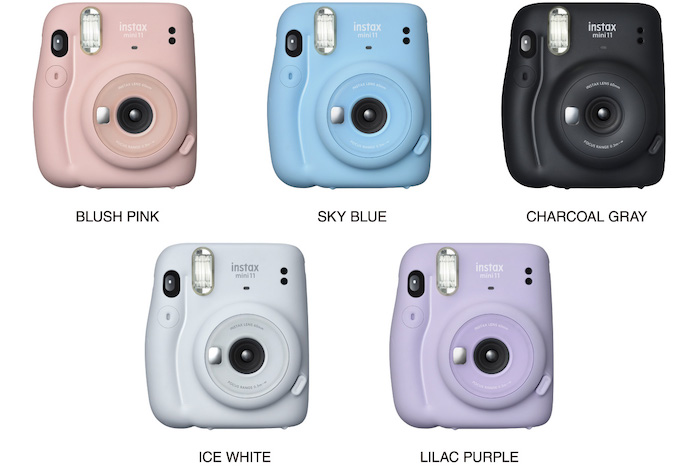
The Mini 9 is available in the following shades: Cobalt Blue, Ice Blue, Flamingo Pink, Lime Green and Smoky White.
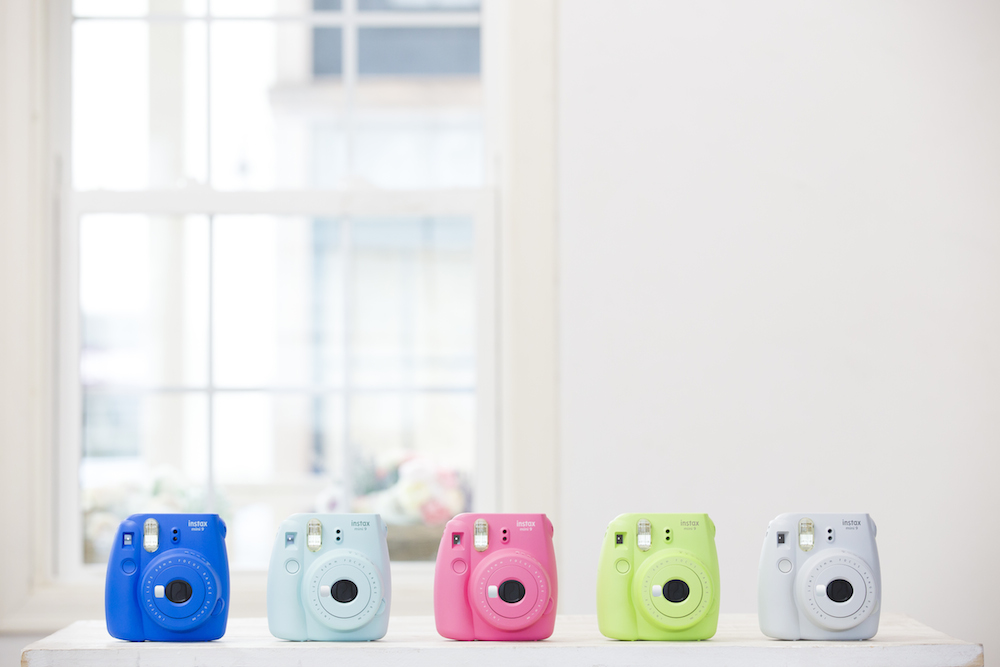
5. Minor Design Tweaks
The new Mini 11 has a more rounded appearance than the Mini 9 and according to DPReview, uses a different kind of material around the lens compared to the rest of the body.
There are now small indents on the shutter button and on/off button, presumably to help you locate them when shooting, a smaller indented grip on the rear, and a large Instax logo on the film door.
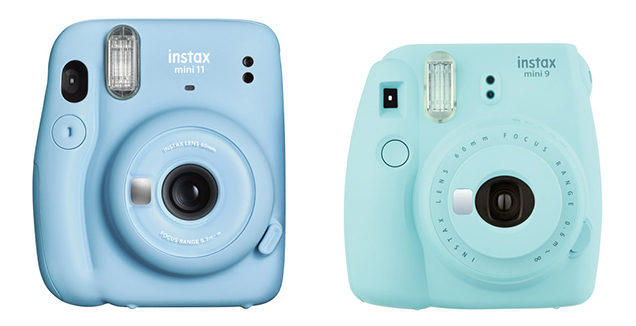

In addition to being a little lighter than the Mini 9 (293g vs 307g with the batteries, strap and film), it is also thinner (107.6mm vs 116mm) and taller (121.2mm vs 118.3mm). The depth is more or less the same (67.3mm vs 68.2mm).
Conclusion
The biggest difference between the Mini 9 and 11 is that the older model gave you some control over the exposure whereas the new model makes all the decisions for you.
On one hand, having some control can be a good thing, as the camera may not always judge the lighting correcting, but on the other, it is also easier to make mistakes and waste quite a lot of expensive film in the process. Whether you choose one or the other really depends on how confident you are in your own ability to select the right exposure.
Another thing to consider is whether you plan to take a lot of selfies or close-up shots with your Instax camera. If so, you might find a model like the Mini 11 more convenient since it has a built-in macro option. To be fair, the separate selfie lens of the Mini 9 works just fine, but I can’t count how many times I’ve forgotten it at home.
Check price of the Instax Mini 11 on B&H Photo
Check price of the Instax Mini 9 on B&H Photo
